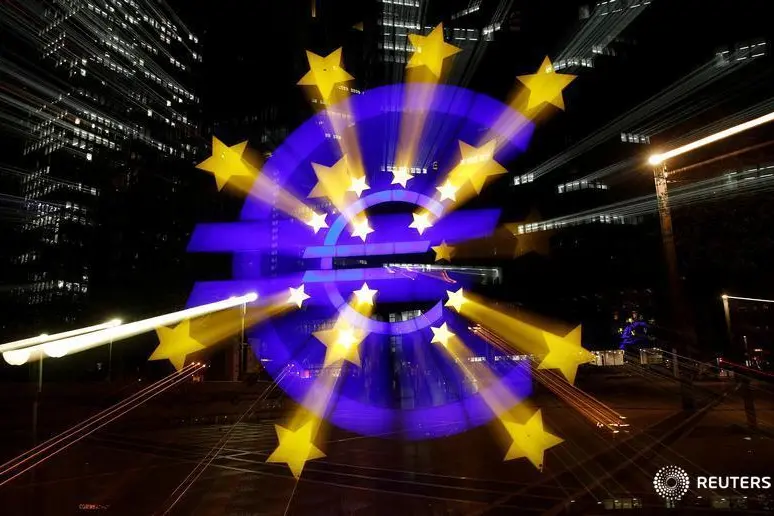PHOTO
ZURICH – With economic sentiment in the eurozone worsening rapidly, the European Central Bank is widely expected to announce a robust package of additional stimulus measures at its next meeting on September 12. But although the ECB’s monetary policy has in general been insufficiently expansionary (reflected by persistently below-target eurozone inflation), now is not the right time for fully-fledged monetary-policy easing, including a return to quantitative easing (QE).
For starters, the eurozone economy is in much better shape than it was in March 2015, when the ECB introduced QE. Compared to then, the eurozone composite purchasing managers’ index, a key indicator of business activity, is a little higher. Headline and core inflation are also higher, as are households’ inflation expectations and the European Commission’s economic sentiment indicator. Furthermore, short- and long-term interest rates, and banks’ lending rates, are much lower, and credit growth is stronger. Given such data, it is difficult to make a persuasive case for QE.
True, market-based measures of inflation expectations have collapsed. But that is part of a global phenomenon, and arguably says little about conditions in the eurozone. Moreover, a host of problems related to risk premiums make such indicators hard to interpret. Unsurprisingly, therefore, surveys of households’ and firms’ inflation expectations forecast actual inflation more accurately. Given that the market-based measures currently conflict with most other key economic data as well, little weight should be attached to them.
It is also true that current global trade tensions have hit eurozone manufacturers hard, particularly in Germany. But it is difficult for monetary policymakers to respond to the introduction of trade barriers. In a small and highly open economy, a monetary expansion will cause the exchange rate to depreciate, thus boosting exports in a beggar-thy-neighbor fashion. The ECB, however, cannot justify a monetary stimulus on those grounds, because it does not rely on the euro’s exchange rate as part of its policy-transmission mechanism.
Of course, if the weakness in the eurozone’s traded-goods sector were to spread to the much larger domestic sector, monetary policy could be effective in boosting demand. But it is not yet clear whether the manufacturing downturn will extend to the rest of the economy. If anything, the global economic slowdown and the approach of the 2020 US presidential election will increase the likelihood of the Sino-American trade conflict being resolved.
The ECB’s eagerness to provide additional stimulus may, therefore, reflect other considerations, such as the cumulative undershooting of its target of an inflation rate “below, but close to, 2%.” But that has been a drawn-out process, and it is difficult to see why years of below-target inflation would warrant a strong response just now.
Alternatively, the ECB may want to loosen policy before Christine Lagarde succeeds Mario Draghi as president on November 1. For all her strengths, Lagarde would no doubt find it difficult to start her term by pushing for more stimulus in the face of opposition from Bundesbank President Jens Weidmann and the hard-money faction in the ECB’s Governing Council.
Regardless of the ECB’s motivation, however, the effectiveness of any additional stimulus is questionable. Interest rates can hardly be cut much further, and it is difficult to see how QE could push down long yields much below their current levels.
Central-bank asset purchases are clearly effective when the financial system is under stress and risk premia are high. In those circumstances, a very large buyer that is not seeking a return can certainly help by vacuuming up assets and putting a floor under their prices. But that is not the situation today; the yield spread on Italian bonds and German Bunds, always a good measure of eurozone tensions, has collapsed.
Moreover, with yields on some long-dated government bonds currently negative, national policymakers are recognizing that it makes sense to spend more on improving public infrastructure and combating global warming. If this realization takes root and sustains fiscal expansion in those countries that can afford it, the result will be a better overall balance between fiscal and monetary policy in the eurozone.
Unfortunately, the ECB is now in a bind. It has stoked expectations of further easing to such an extent that long bond yields will snap back upward if it doesn’t deliver some policy easing on September 12. But the ECB would be better advised to wait with large-scale QE. For the time being, any significant easing package seems premature.
Stefan Gerlach is Chief Economist at EFG Bank in Zurich and a former deputy governor of the Central Bank of Ireland. He is also a former Executive Director and Chief Economist of the Hong Kong Monetary Authority and Secretary to the Committee on the Global Financial System at the BIS.
Copyright: Project Syndicate, 2019.
www.project-syndicate.org












